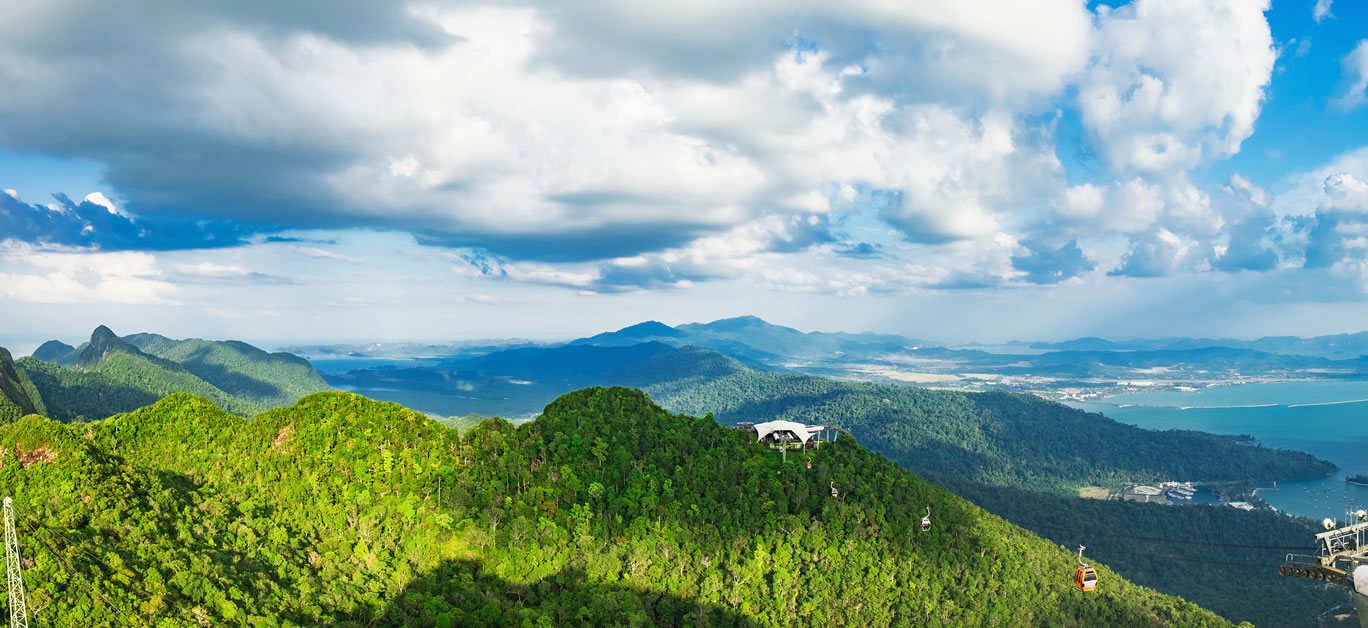Words by Ben West
I have an aversion to risk: mentioning politics at a dinner party is as about brave as I’ll usually go. So when I found myself standing 50 metres up on a platform in a rainforest tree, with no steps or ladder, and was told to jump down to earth in what was described as ‘controlled free fall’, I was a tad nervous to say the least.
However, sliding down the vertical zipline, after sliding along a whole series of horizontal ones through this pristine rainforest, proved to be undeniably exhilarating.
Umgawa Zipline Eco Adventures’ ziplines fixed to the towering trees reach as high as 80 metres and are up to 200 metres in length. The immersive and engaging two-hour tour encompasses numerous bridges and 12 ziplines, including one crossing the spectacular Seven Wells Waterfall. Reassuringly, you are strapped in the whole time and safety is paramount.
This was just one of the numerous thrilling excursions on offer at Langkawi, which at nearly 500 square kilometres is the largest island on Malaysia’s west coast. Part of an archipelago of ninety-nine islands, it possesses a host of lovely beaches and unspoilt mountainous jungle. It is the perfect base for a holiday alternating from relaxation to thrills. It’s comparatively easy to get to too, as Malaysian Airlines flies daily from London Heathrow to Langkawi, via Kuala Lumpur.
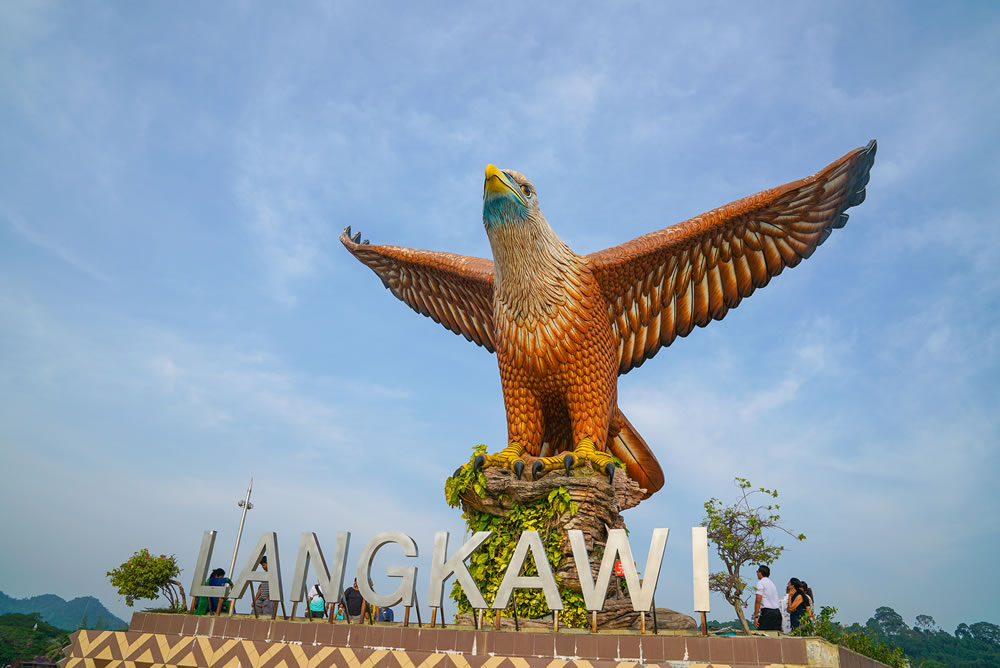
The elegant, colonial-style Danna Hotel is ideal for a stay here, with its sumptuous rooms and even more luxurious private beachside villas, four excellent restaurants, the largest infinity pool on the island, and beyond it an often completely empty beach that it’d be criminal not to lounge on for a while. It overlooks a wonderful seafront of warm, crystal clear blue waters and a couple of inviting little islets that are easily swimmable. The hotel is away from all the bustle of Pantai Cenang town, but that just makes it an even more ideal retreat.
When we checked in at the hotel, instead of queuing at the front desk we lounged on opulent sofas and were each given a revitalising fresh fruit juice concoction. A masseuse then appeared, providing each guest with a shoulders and neck massage.
The skilled masseurs are from the hotel’s sumptuous spa that overlooks lush greenery and a marina. Its range of treatments include a Malay Urut traditional massage. I can take or leave massages and didn’t expect anything special at all, but it proved to be truly energising, the best massage I have ever experienced. You’re given a choice of fragrant botanical massage oils focusing on serenity, recovery, vitality and clarity and then given expert deep pressure massages using special traditional Malay techniques which are passed down over generations.
Another spa experience is at Air Hangat Village, which has a series of natural hot water springs that are believed to have healing properties – indeed, Air Hangat means ‘hot water’ in Malay. There are open-air jacuzzis, a communal pool and other spa treatments available.
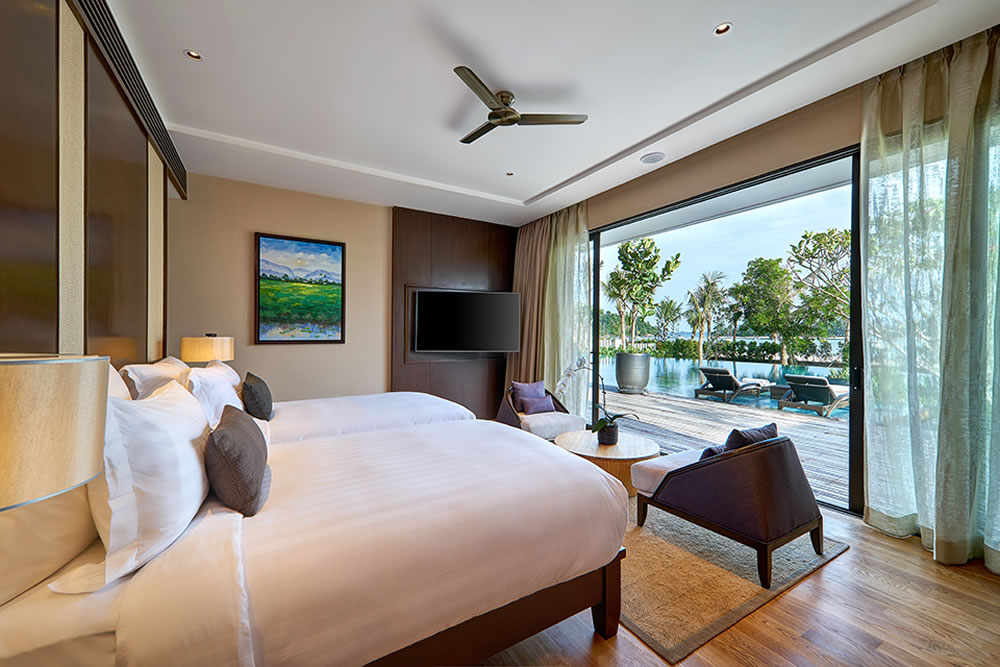
Langkawi is Southeast Asia’s only site to have been granted UNESCO Geopark status. The entire island is deemed a World Geopark, defined as ‘a territory encompassing one or more sites of scientific importance, not only for geological reasons but also by virtue of its archaeological, ecological or cultural value.’ That means it’s got a remarkable collection of rocks, including the Dayang Bunting Marble Geoforest Park’s caves and karstic landscapes, the 400-million-year-old Machinchang mountain ranges, and the rugged karst limestone formations of the Kilim Karst Geoforest Park.
The latter makes a great day out discovering the mangrove swamps. Boarding a boat at Kilim Jetty, you tour the often narrow waterways of the park, with wildlife-rich rainforest unfurling either side of you. The sight of seemingly endless exposed twisted roots of the mangroves is striking, and nestling amongst the vegetation are pythons, long tailed bonnet macaque monkeys, huge water monitor lizards and more. It is also possible to enter caves here to see an amazing array of bats hanging from the walls – and flying around you.
Langkawi provides a habitat for more than 200 bird species and you may spot the likes of drongos, hornbills, herons and kingfishers on this excursion. There’s an area where eagles and red kites particularly like to congregate, and if you stop the boat here you are likely to see two or three at a time flying above you.
For an even bigger array of birds, head for Langkawi Wildlife Park, a five-acre animal sanctuary containing more than 2,500 exotic birds spanning around 150 species. It has a walk-in aviary, and you’re likely to see birds that include cranes, ostriches, emus, peacocks, pelicans, toucans and flamingos. Animals here include monkeys, meercats, pythons, porcupines and crocodiles.
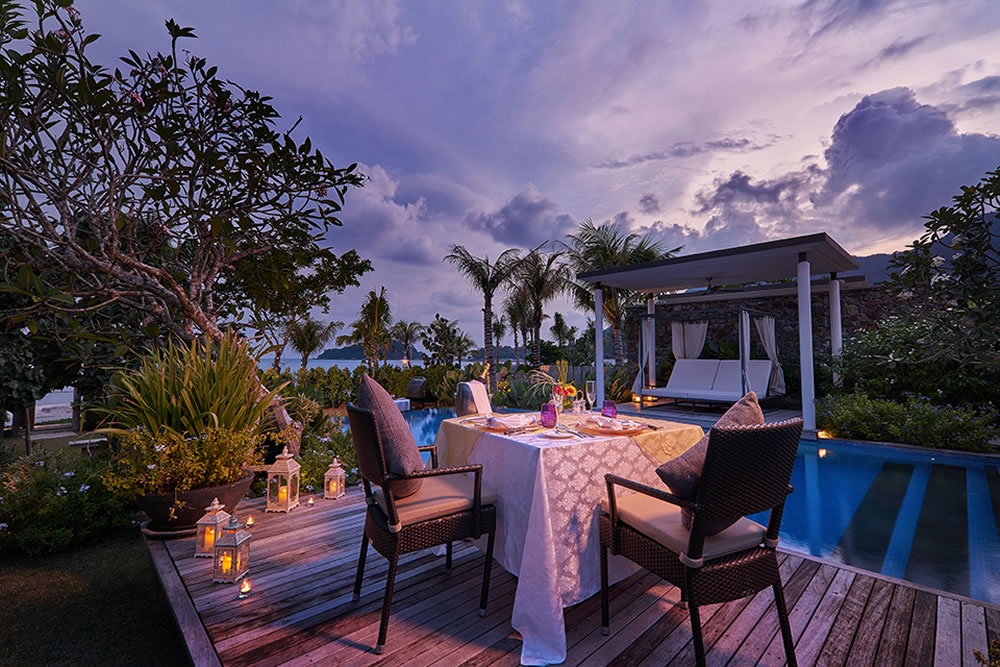
It’s good to jump on a boat at sunset, to tour the coastline, too. Watching the sun go down surrounded by beautiful islands, some good food, a refreshing drink and some music is a great way to spend an evening. You may spot spinner dolphins and flying fish.
An unforgettable way to explore Langkawi is by horseback. Even if you’re not an experienced rider, there are suitable riding itineraries available, including beach and village tours. With Island Horses Langkawi, for example, a guide accompanies you, sharing details about the local wildlife, geography and history along the way.
Langkawi is known for its waterfalls, and a hike to one of these, Durian Perangin, is recommended, although it can get pretty crowded at weekends. The walk is quite steep in places, but you can stop along the way to admire the ever-changing stunning views, and reward yourself with a refreshing dip in the pool at the base.
Another waterfall option is Telaga Tujuh, which means ‘Seven Pools’ in Malay. Again it is quite a steep climb, but has seven natural pools and wells and a good variety of wildlife including monkeys, squirrels and hornbills.
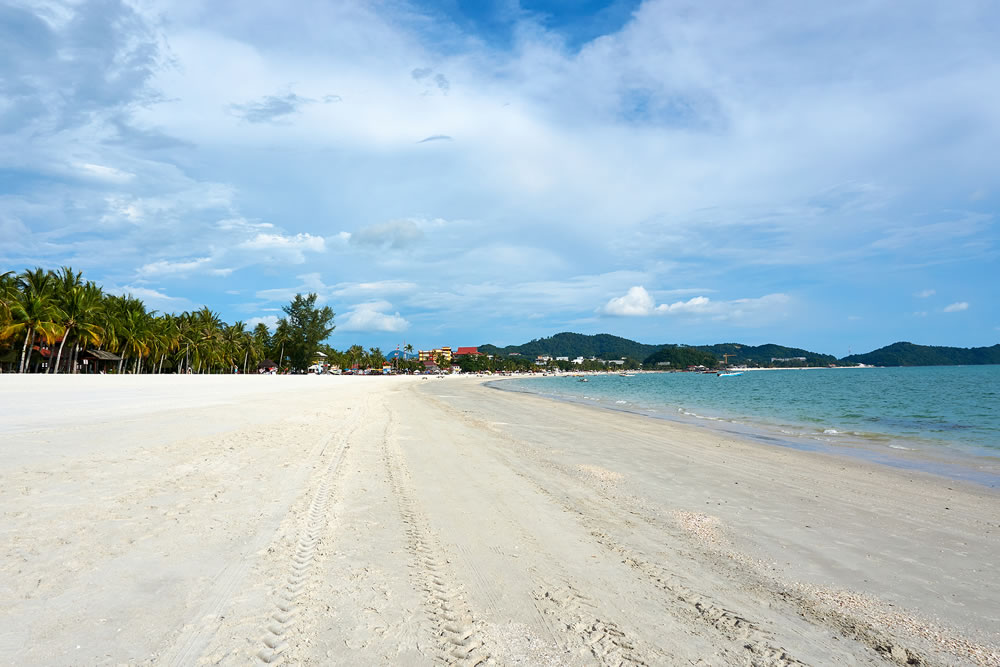
A real adrenaline rush is guaranteed if you try your hand at jet skiing to some of the islands, such as Pulau Dayang Bunting (which has a freshwater lake, perfect for a refreshing swim) and Pulau Beras Basah and its sandy beaches and swaying palm trees.
On Langkawi, Pantai Cenang is one of the most popular beaches, not least because of its large range of water sports activities, such as paddle boarding, wakeboarding, scuba diving, banana boats, snorkeling and paragliding. As an example, one of the companies here, Naam Sports, offers parasailing, where you launch and land from their boat that is especially designed for parasailing – launching from the beach itself is illegal and unsafe.
While there’s certainly a number of beach resorts on Langkawi, you can still find laid back beach shack bars, especially on the sands of Pantai Cenang. There’s a good choice of restaurants and bars around the island (at low prices, partly due to Langkawi being a duty free zone), but the superb choice of restaurants and bars with a variety of cuisines from around the world at the Danna means you’ll seldom feel the need to venture out.
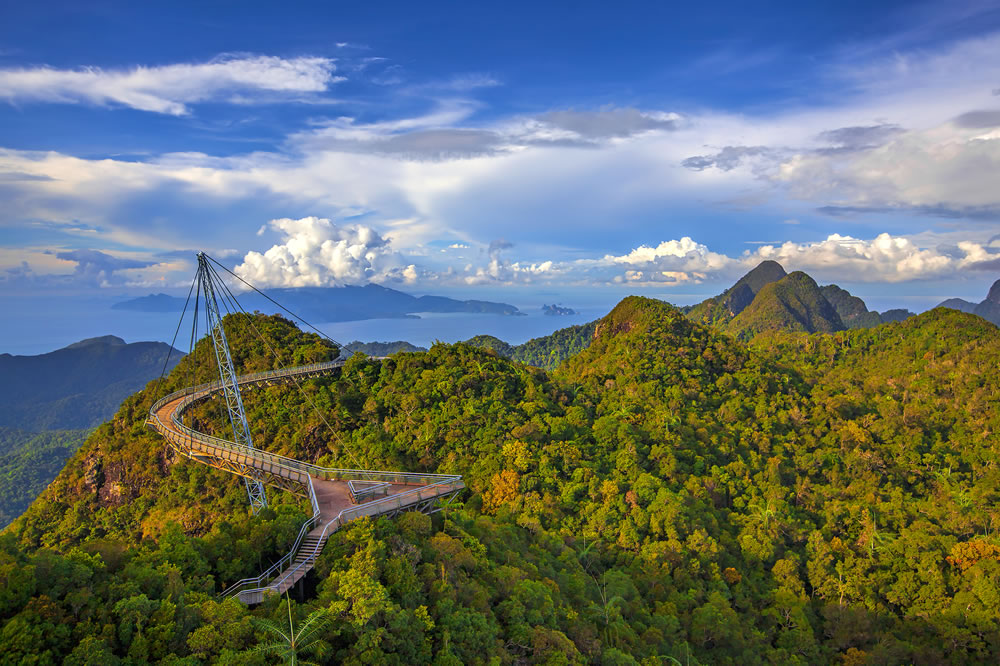
Factbox
The Danna Langkawi: thedanna.com
Malaysia Airlines: malaysiaairlines.com
Activities
Mangrove boat tour – Dev’s Adventure Tours: langkawi-nature.com; Langkawi Skyride and Skybridge: panoramalangkawi.com; Umgawa Zipline Eco Adventures: ziplinelangkawi.com; Sunset boat cruise – Avante Yacht Charters: avante-holidays.com; Megawatersports Jetski safari: megawatersports.com; Naam Sports: naam.bz; Island Horses Langkawi: langkawihorses.com; Langkawi Wildlife Park: langkawiwildlifepark.com.
Further reading
Malaysia, Singapore and Brunei (Lonely Planet, £17.99).
Thank you to Langkawi Development Agency (lada.gov.my) for their help with sponsoring this trip.












